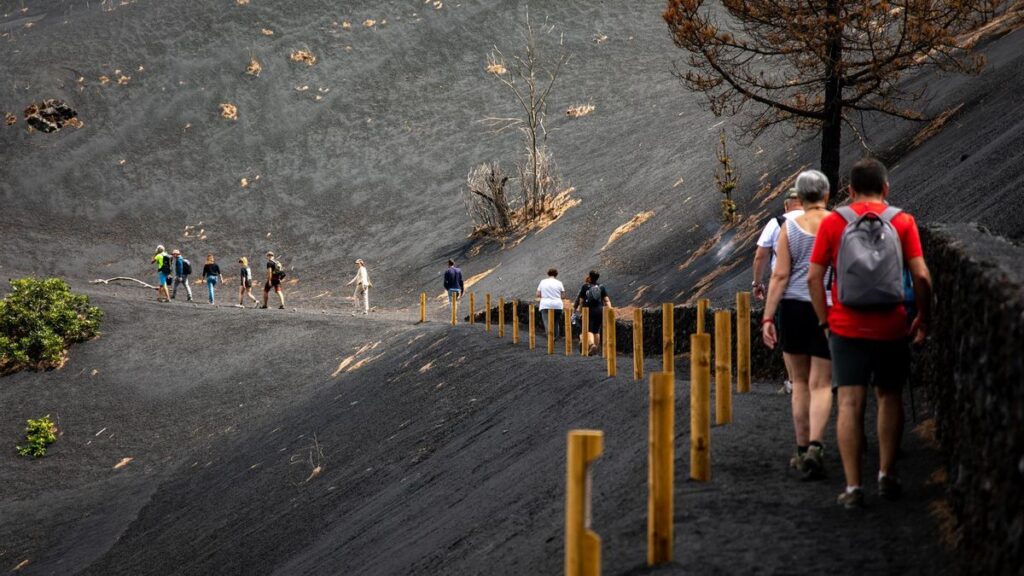A Landscape Forever Changed
La Palma is gradually reclaiming its vibrant tourist spirit, four years after the onset of the ‘Tajogaite’ volcano eruption. This seismic event left a deep emotional and economic scar across the Aridane Valley, unleashing 85 long and agonizing days of destruction. The eruption claimed approximately 1,200 hectares of land, over 1,000 homes, and forced the evacuation of more than 5,000 people. Occurring during the height of the COVID-19 pandemic, the continuous emission of volcanic gases and ash led to incessant flight cancellations and delays, dealing a severe blow to the tourism sector. The western strip of the island was closed, with hundreds of vacation rental properties buried beneath layers of lava.
The Path to Recovery and Persistent Challenges
“We are approaching pre-volcano conditions, but the underlying problems are still there,” Óscar León, President of the Center for Initiatives and Tourism (CIT) on the island, explained to Europa Press. He laments that social issues stemming from the lack of housing for those affected and the ongoing management of volcanic gases continue to harm the destination’s image. The data, however, supports a narrative of recovery. With the Meliá hotel in Puerto Naos now operating at full capacity, the island has seen a 39.4% growth in overnight stays over the last three years (as of July), a 23.7% increase in travelers, a nearly 15% rise in rates, and a 24.8% jump in revenue per room.
Call for a Strategic Vision
Despite these positive figures, for many, it is not enough. Carlos García, Vice President and Delegate of Ashotel, states that “nothing has changed,” and neither COVID-19 nor the volcano have “served to change the course” of the island. He regrets that the formula for generating more profitability from the ‘Tajogaite’ has yet to be found. “It’s a landscape product, let’s say, but not one that is currently being exploited for tourism by the administration. I always ask when we are going to create La Palma’s version of Timanfaya [a major tourist attraction in Lanzarote], and so far, few steps have been taken in that direction,” he indicates.
In this vein, he calls for a “strategic plan” to guide how to exploit the volcano, “copying success cases” like Lanzarote, which is “full of tourists.” “For now, we are very stagnant on this,” he adds. The president of the CIT expresses similar concerns, admitting that the initial curiosity about the volcano “has been declining.” Although it remains the most requested excursion for tourists—alongside visits to the La Caldera de Taburiente National Park and the Marcos and Cordero springs—he believes that “things are not being done right.” “Things are going well, but slowly,” he summarizes.
Official Optimism and Future Potential
The Island Council’s Minister of Tourism, Raquel Rebollo, is more optimistic and asks for a little more time to squeeze all the potential from the ‘Tajogaite’. She points out that for the first year and a half, access was impossible and product development was halted due to high temperatures and gas emissions. “This is an excursion that leaves visitors speechless; it is highly recommendable and impressive. We need more signage, more services associated with that route. In other words, we are still working and professionalizing it, but we must not forget that it is a relatively new resource for the island of La Palma,” she notes.
Air Connectivity and Hotel Capacity
A key to bolstering the tourist recovery is air connectivity. Some markets are waiting for an increase in tourist beds to boost tour operator activity and flight frequency. The island has just over 16,000 beds—equivalent to a single tourist municipality in Tenerife or Gran Canaria. Although La Palma is a benchmark for nature tourism, more hotel beds are needed to make designing tourist packages for the island “profitable.”
Recovery of Connectivity
Minister Rebollo defends that the recovery of connectivity is a fact, with 108,000 international seats available for the winter season. “We are not decreasing; on the contrary, we are growing,” she indicates, stressing that airline strategies must also be worked on well in advance. This growth must be linked to an increase in hotel places so that “the prices of coming to the island are more profitable.” Carlos García also questions the “monopoly” held by Iberia on domestic flights and the high price of tickets. He adds that bets on new tourist complexes, like the La Pavona eco-resort, which could activate tour operators, are moving “very slowly.”
The Need for Diversified Tourism
The CIT agrees with this diagnosis and regrets that these differentiated projects linked to golf or wellness tourism “are not quite materializing” on an island where the banana farming sector believes it “cannot give more of itself” and tourism is the sector that “can move the economy.” “What we have on the island is good, but we need more,” he points out.
A Destination of High Satisfaction
For now, the Island Council’s Minister of Tourism focuses on the high degree of satisfaction among tourists who visit La Palma. It is also a “cheaper” destination than others, boasting great natural attractions, excellent gastronomy, and good service. “Once people get to know us, the satisfaction rate is very high, and they recommend us,” she highlights.


